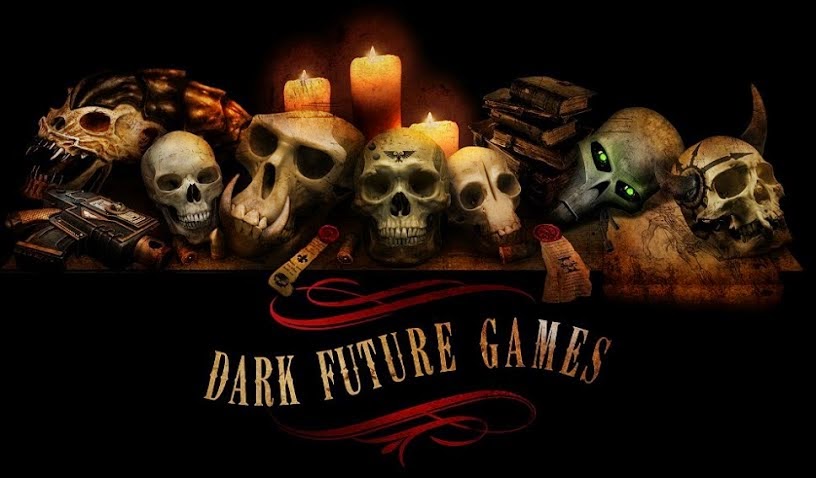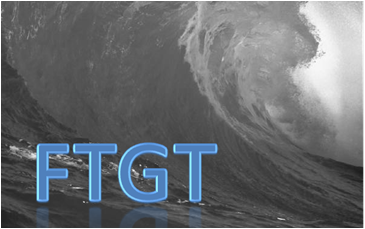Hello readers. I’ve had a bit of a bee in my bonnet of late that buzzes around the honeyed idea of building my own world for Warhammer 40,000 (and to torture the metaphor even more, it’s probably a “hive” world). And this got me wondering about, well, where to start. How do you create your own fantasy world? I kind of want to make this a bit of a community project if anyone’s up for contributing (you know where the comments section is), but the bones of the world will have to come from me. And so this is the first in a series of articles about creating an actual world for the Warhammer 40,000 universe. And where better to start than with a good map?
I learned this technique for D&D a long time back, but I’ve extended it and developed it to help me build a planet in a way that works for me. I started with a piece of graph paper and my bits tub (which is different to my bits box(es) and bits trunk… I may have a problem). I took a few bits and scattered them across the paper thusly:
I tried to keep it random, but sensible too. A couple of big central piles and some scattered bits and bobs here and there. Next, I took a marker pen and roughly traced around the pieces here (no need to worry about being too neat – it’s almost impossible not to nudge the odd piece here and there). Here’s what I ended up with:
Not bad, right? In the past, I’ve employed dry pasta and pebbles to help me do this but I think the bits tub gave me a better variety of shapes and we’ve got a passable map with some big continents and some larger islands. Now, you’ve got one last job for that marker pen of yours…
…and that’s adding some reference numbers to the graph paper – more will be explained about these very shortly. I also added a few random small islands here and there. These are more the size of Sicily, Taiwan, Jamaica and the like on a map of our own world. Next up, we’re turning to everyone’s favourite thing – dice!
But we’ll need more than our faithful D6 for this. I turned to my slightly fancy DnD dice set as D4s, D10s, D20s and the like will be far more helpful to us here. While we have our continents and islands, I want to give our map here a little more detail. That’s going to start with major cities (perhaps Hives) and major rivers (think Amazon and Nile rather than Thames and Trent), and the dice will help me determine where these are, and in the case of rivers, how long they extend for, so let’s see what the Dice Gods contributed here:
Turns out, the dice gods were pretty kind to me (for a change). Using a D10 and a D20, we determined which squares the rivers would start in, and then, using a D4, we determined how many large squares they should go across. A bit of random squiggling with the pen and we get our 7 major rivers. I thought about adding lakes too, but decided against it as I thought it would be a notable characteristic not to have any significant inland seas or super-lakes. Then the D10 and D20 (obviously ignoring results 15-20) helped me place the cities. I kept these quite coastal (given that this is the trend across our own world) with only one exception on the main continent, but I kept this close to a river that was luckily flowing near by. Oh, and as we had 10 major population centres, and because this is 40k map, I wanted a planetary capital. A roll of 8, and working down and across, I could assign this roll to the city to the south of the main continent. Next up, I think we need some mountain chains…
And what better to use for mountain chains than an actual chain? This is my chain of pinning material (some casuals refer to them as ‘paperclips’, I believe) but you can use any chain or even a piece of string. Again, this is just a guide so let’s see what it guided me to create on the map:
And with a couple of extra smaller ranges dotted around at random, we have our mountain chains. You’ll see I’ve also added a couple of dashed “tropics” lines. That’s because we’re now going to assign primary terrain types to the rest of the map and the rough rule is no deserts in the polar regions, no tundra in the central region. A bit of help from the dice and here’s what we have:
And so now we have a map! Arid deserts, deep, dark forests, snowy tundras and expansive savannahs cover the world that I’ve just created. I guess this is what it feels like to be God, or at least Slartibartfast. I’m quite happy with the results really. It’s amazing what some dice, a few bits and some stationery can produce.
But this is just the start. I don’t want this to be a world confined to a bit of graph paper. We need to turn this planet into a living, breathing part of the galaxy. We need names, histories, mythologies, horticulture, bestiaries… Though that will all have to wait for the further editions of this series. Until then, i hope this has helped to get your creative juices flowing, and if you have any ideas for this world, let me know! Onwards!









 40kaddict
40kaddict 4gotowar
4gotowar convertorum
convertorum darkfuturegaming
darkfuturegaming ftgtgaming
ftgtgaming Mind of the Daemon
Mind of the Daemon taleofpainters
taleofpainters talkwargaming
talkwargaming Twisted Brushes
Twisted Brushes weemen
weemen
Cool idea. I like the mechanical aids to randomise the larger features. Looking forward to seeing this world develop.